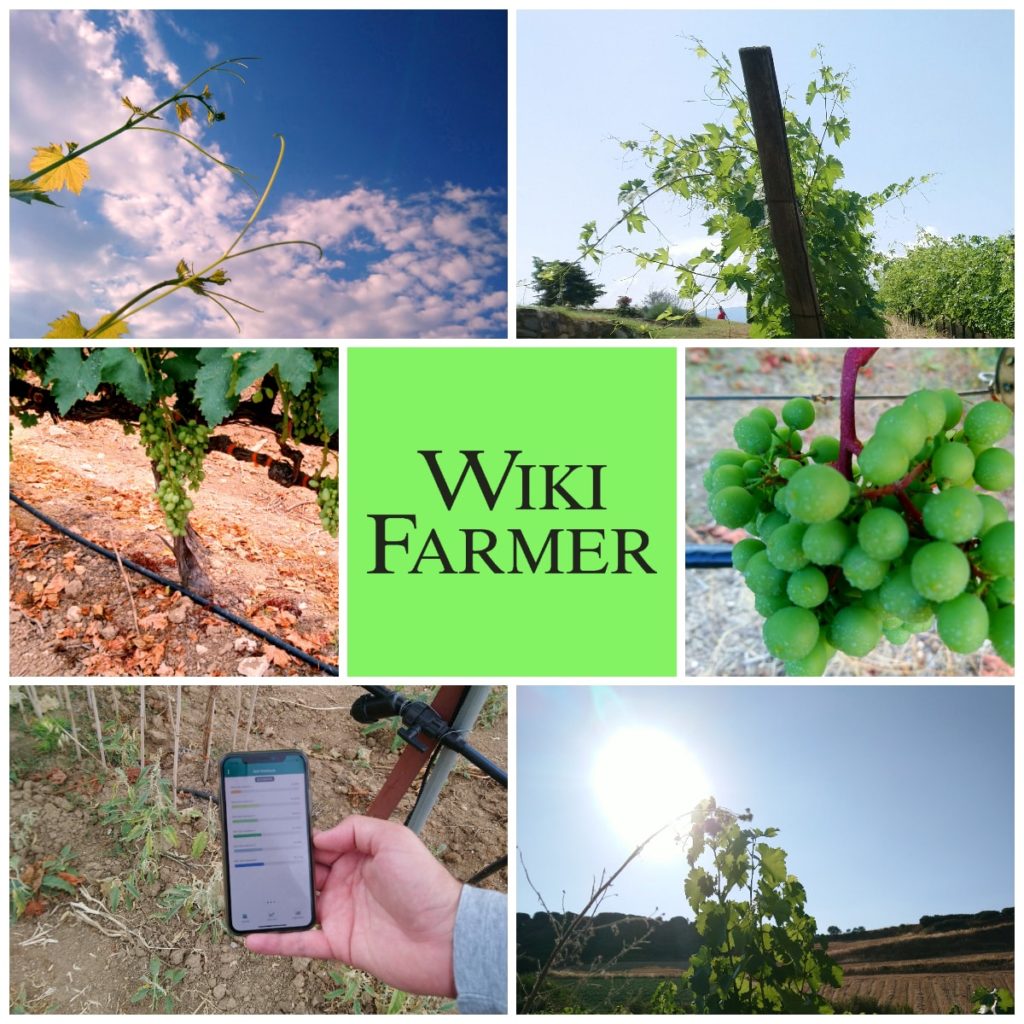Grapes Irrigation and Water Management

This post is also available in:
This post is also available in:
![]() Español (Spanish)
Español (Spanish) ![]() Français (French)
Français (French) ![]() Deutsch (German)
Deutsch (German) ![]() Nederlands (Dutch)
Nederlands (Dutch) ![]() हिन्दी (Hindi)
हिन्दी (Hindi) ![]() العربية (Arabic)
العربية (Arabic) ![]() Türkçe (Turkish)
Türkçe (Turkish) ![]() 简体中文 (Chinese (Simplified))
简体中文 (Chinese (Simplified)) ![]() Русский (Russian)
Русский (Russian) ![]() Italiano (Italian)
Italiano (Italian) ![]() Ελληνικά (Greek)
Ελληνικά (Greek) ![]() Português (Portuguese (Brazil))
Português (Portuguese (Brazil)) ![]() Tiếng Việt (Vietnamese)
Tiếng Việt (Vietnamese) ![]() Indonesia (Indonesian)
Indonesia (Indonesian) ![]() 한국어 (Korean)
한국어 (Korean) ![]() polski (Polish)
polski (Polish)
How and when to irrigate vineyards
There are several schools of thought when it comes to vine irrigation. You can rarely find two experienced grape farmers who can agree on a proper annual irrigation plan. Some farmers support that specific winemaking varieties in specific regions do not require irrigation at all (provided there are some rainfalls), while others disagree. Those who prefer not to supply additional water, claim that irrigation leads to the production of grapes high in quantity but low in quality. What is true, is that the quality of the wine is indeed determined partly by the water the plant absorbs, because water affects the acids-sugars content balance, which is one of the main wine quality determinant factors. The amount of water a vineyard needs though depends on several factors, such as the annual precipitation, evapotranspiration, the age of the plants, the development stage, the growing period, the soil type, environmental conditions, the variety, and growing techniques.
According to FAO, the total water requirements of a grapevine during a growing season varies between 500-1200mm. In general, winemaking varieties demand fewer irrigation sessions than table varieties. However, these are general rules, and nobody shall apply them without doing extensive research.
In cases of extremely dry conditions, the vines are going to show symptoms like wilting and growth reduction.

The critical stages for the vine water needs are:
During the bud break
At this stage, the plant has high water needs in order to be able to start a new season’s development. It is true that -in most cases- the water stored in the subsoil during the rainy days of winter is enough for the vine. However, in sandy soils or in areas with prolonged drought conditions, additional water is required in some cases.
From flowering to fruit set
This is the most critical period as there is an increased risk for plants to face water stress. This may result in limited fruit set.
From fruit set to veraison
Water stress of the plant during this stage, especially for table grape varieties, will lead to berry size reduction.
During the maturing stage
According to observations, smaller and more frequent irrigation sessions during the maturity stage may lead to an increase in grape’s quality characteristics. Still, many wine grape varieties producers, prefer not to irrigate at all at this stage. This is the period when farmers shall be careful with irrigation though. Excess watering during maturity may cause the table grape varieties not to mature properly, while in wine grape varieties it may affect the sugar content. If the day before harvesting is rainy, then we may have to delay harvesting for 3-4 days, so that the grapes will “dry out”, will remove the excess water and keep the proper water content, which also affects their relative sugar proportion.
After harvesting
In order to tolerate winter’s low temperatures, vines should produce a sufficient amount of wood. Thus, many producers choose to irrigate their vines after harvesting, so as not to lose their foliage too soon, thereby stopping any additional growth.
Experienced farmers claim that they understand that the plant undergoes the first water stress when the top tendril goes downhill and the upper leaves wither. Other farmers report that they spot the first water stress in the bottom leaves. However, this does not apply in all cases. According to them, the second stress starts when the lower leaves curl and wither.
Nowadays, precision agriculture uses high technology in the field, providing the producers with accurate measurements of the water needs of any specific vine.
In general, from the time that the grape starts to grow, many table grapes producers apply one good irrigation session per week. In most cases, drip irrigation is used and the valves in the system have a distance of 50 cm (1,6 ft.) each.
You can enrich this article by leaving a comment or photo of your vineyard’s irrigation techniques.
Viticulture Definition – What is Viticulture?
How to Grow Grapes for Profit- Commercial Grape Grower’s Essential Guide
Soil Requirements and Preparation for Grapevine Farming
Grapevines Planting and Plant spacing – Number of plants per hectare
Grapes Training Systems and Methods
Vine Pruning, Defoliation and Thinning
Grapes Irrigation and Water Management
Common Grapevine Pest and Diseases
Grape Harvesting – When and How to Harvest Vineyard
Grape Yield per Hectare and Acre
The use of Technology in Contemporary Viticulture
Do you have experience in commercial Viticulture? Please share your experience, methods and practices in the comments below. All the content you add will be soon reviewed by our agronomists. Once approved, it will be added to Wikifarmer.com and it will influence positively thousands of new and experienced farmers across the world.









































































